The European Space Agency (ESA) has just released stunning new photos of a huge, Grand Canyon-sized “scar” on the surface of the planet Mars.
While scientists have explained that Mars actually has many of these scars, this is the first few photos released that show an enormous scar in such high definition.
The ESA’s Ongoing Mission
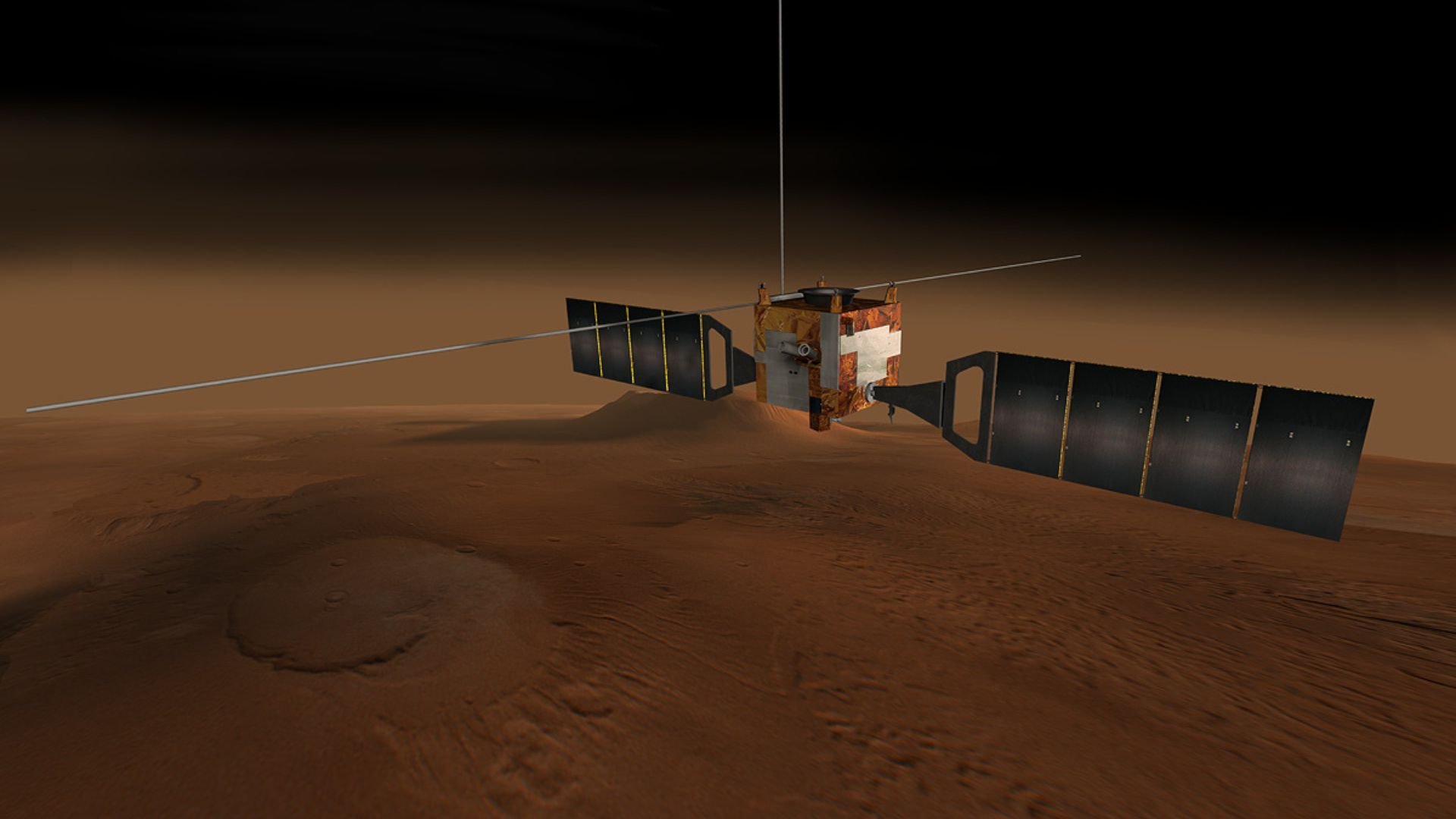
These new images come from the ESA’s Mars Express, a Mars orbiter that was first launched in 2003. For decades now, the Mars Express has been orbiting the Red Planet to collect vital information about one of Earth’s nearest neighbors.
This mission was Europe’s first mission to Mars. Since its launch, the orbiter has been able to send back interesting information to ESA.
A Lost Lander
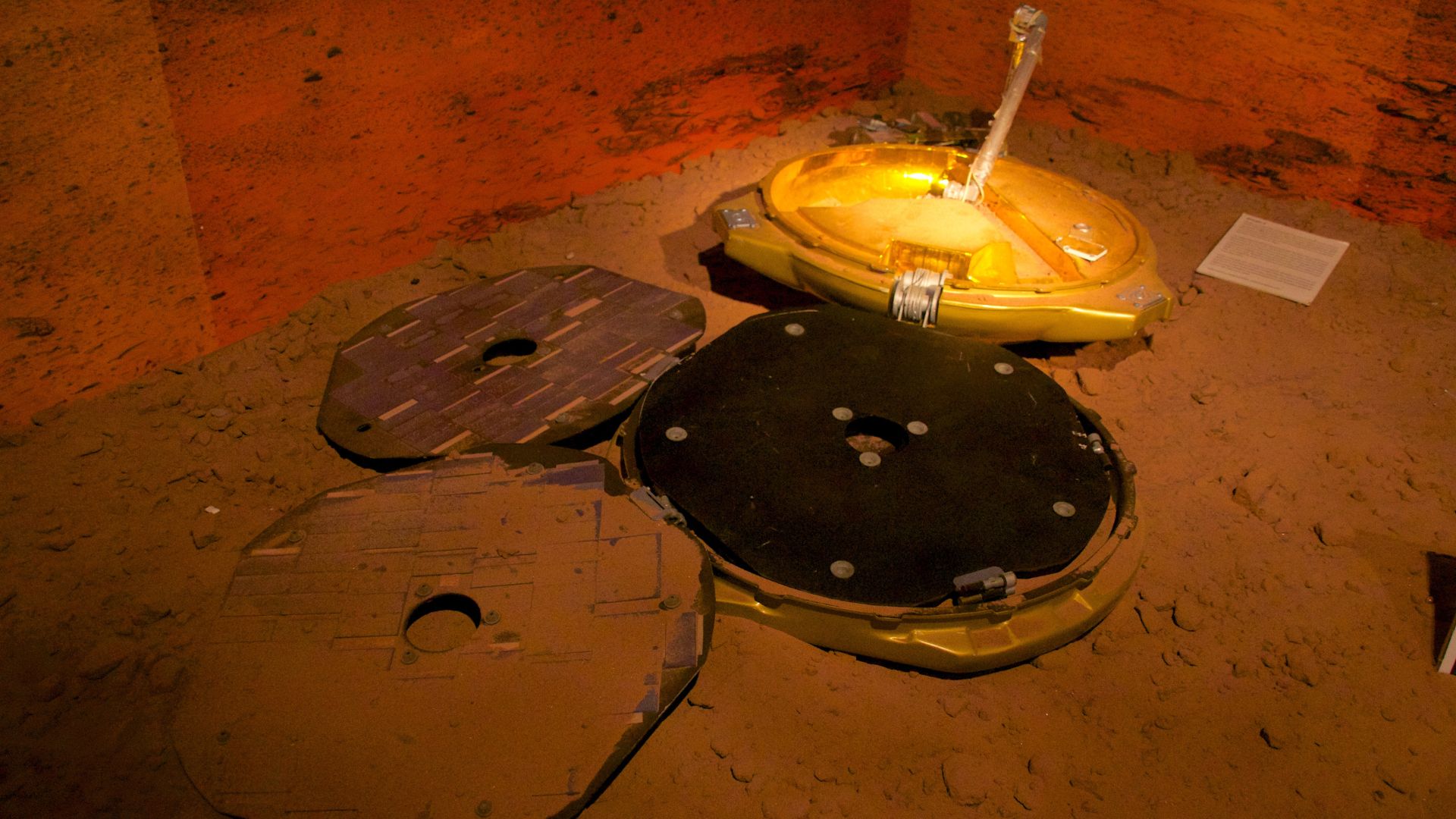
Though the ESA did lose its Mars lander, coined Beagle 2, the Mars Express continues to orbit the planet and conduct its mission successfully.
So far, this orbiter has been able to map minerals on Mars, study the planet’s atmosphere, probe regions beneath the planet’s crust, and even study Mars’ moons named Deimos and Phobos.
Studying Aganippe Fossa
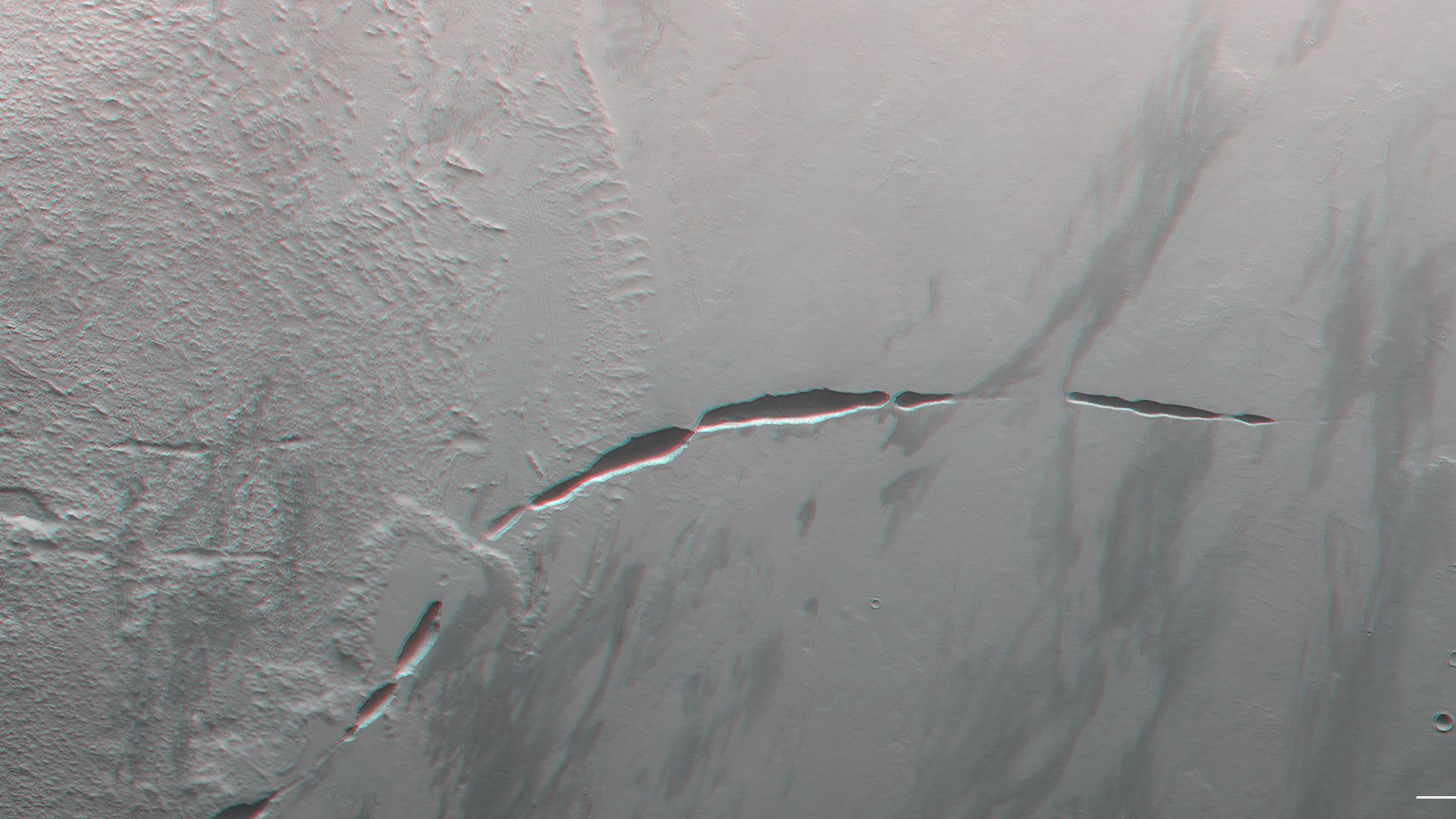
The orbiter’s recent study occurred in the Aganippe Fossa region of the Red Planet. Aganippe Fossa is a region of Mars that has many ditch-like grooves and steep walls.
Scientists have stated that this area is a “graben”. After the orbiter took photos of this region, it was revealed that it looks an awful lot like a huge scar stretching across the planet’s surface.
Mars’ Many Scars and Scratches
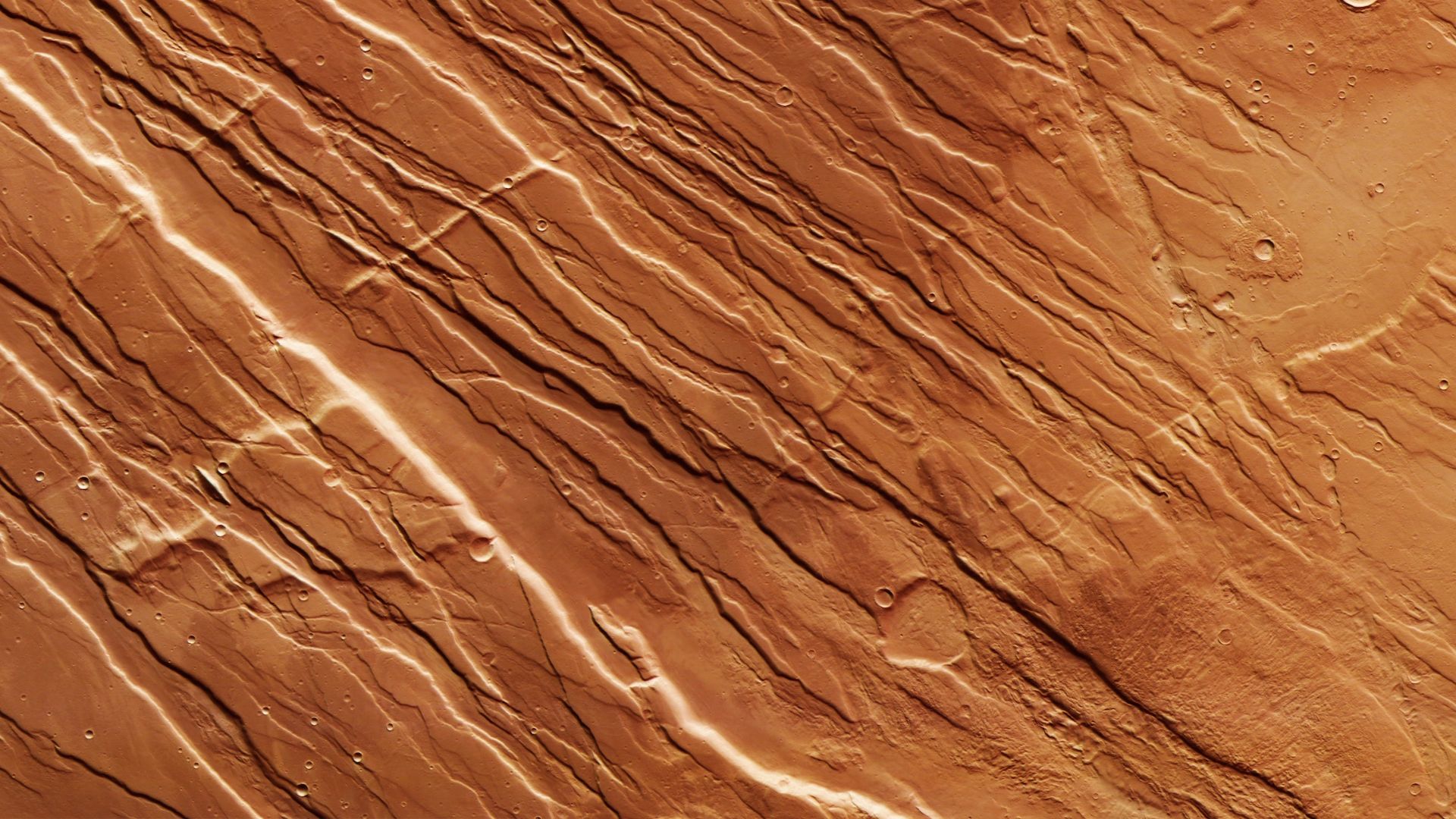
Researchers have also explained that Mars actually seems to have many scars and scratches on its surface.
However, the one that encompasses Aganippe Fossa is quite unique, especially because it’s the same size as the Grand Canyon on Earth. This enormous scar, which stretches for at least 373 miles on Mars’ surface, is also located at the base of one of the planet’s largest volcanoes, an enormous monster called Arsia Mons.
How Was This Scar Formed?

Scientists are still conducting investigations to theorize about how this so-called scar on Mars was initially formed.
In a press release, ESA explained, “We’re still unsure of how and when Aganippe Fossa came to be, but it seems likely that it was formed as magma rising underneath the colossal mass of the Tharsis volcanoes caused Mars’s crust to stretch and crack.”
High-Resolution Images
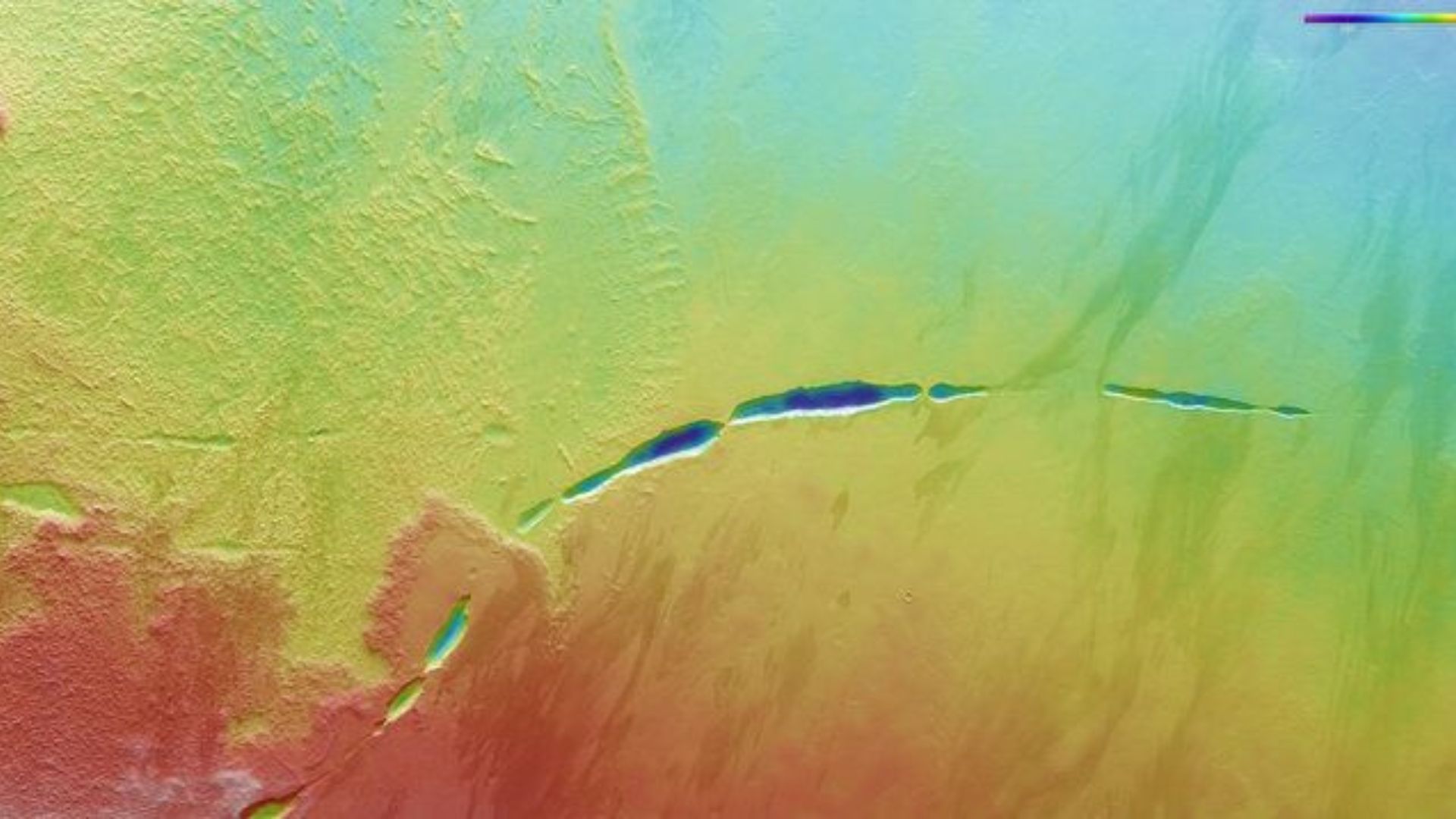
Thanks to the Mars Express, scientists are able to analyze the Aganippe Fossa for the first time in great detail.
These photos were taken with the orbiter’s high-resolution stereo camera. Therefore, it’s easy to see the many different features Mars’ surface has. The planet is littered with uneven and clustered hills, as well as smooth cliffs.
Analyzing Arsia Mons
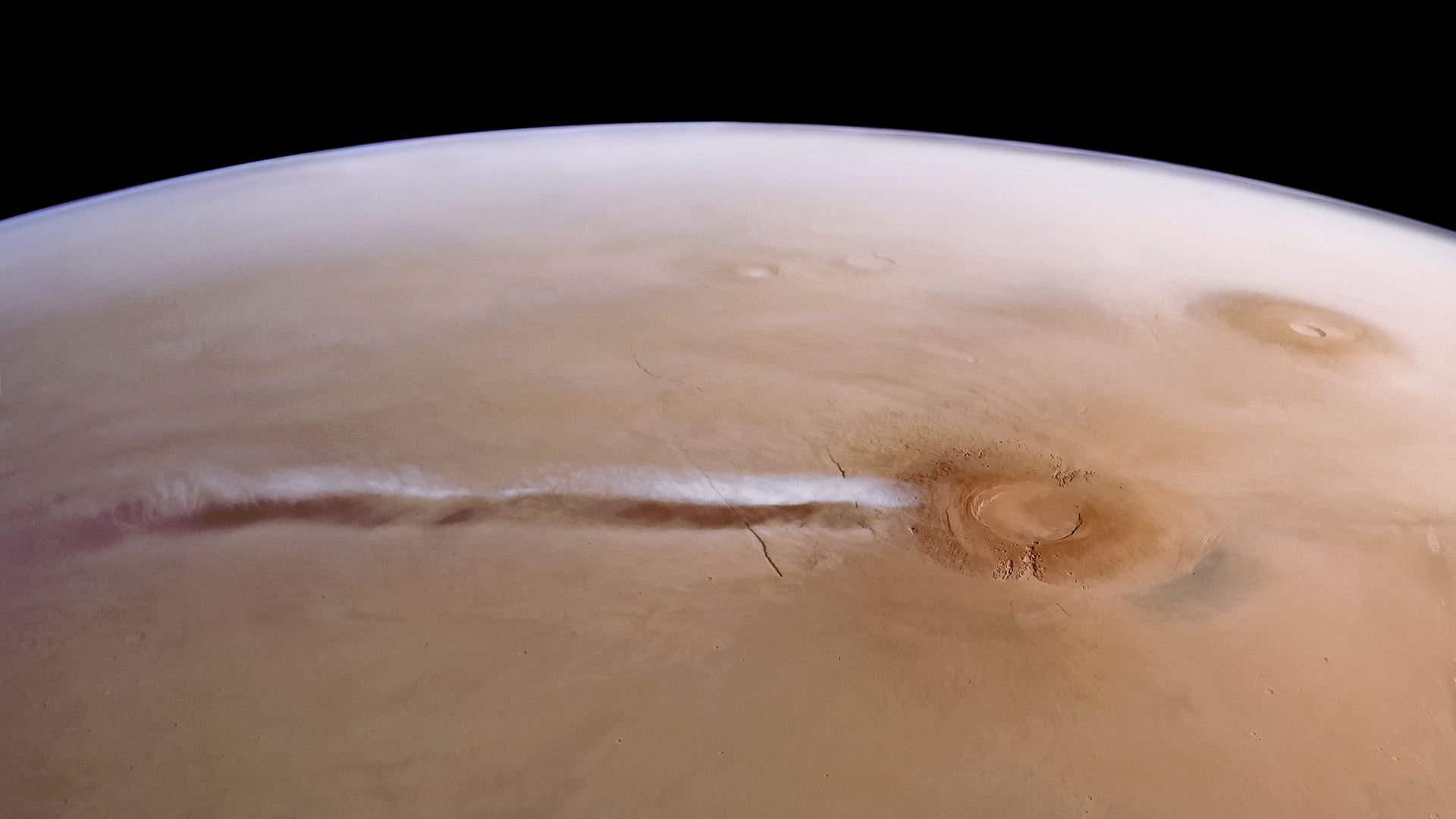
As this scar is located at the base of the volcano Arsia Mons, researchers have also been given a closer look at this entire region.
They’ve found that this scar is quite similar to the ring-shaped “aureole” that is found at the base of Arsia Mons. So far, scientists have theorized that this ring may be associated with ancient glaciers that once appeared on Mars.
How This Ring Was Formed
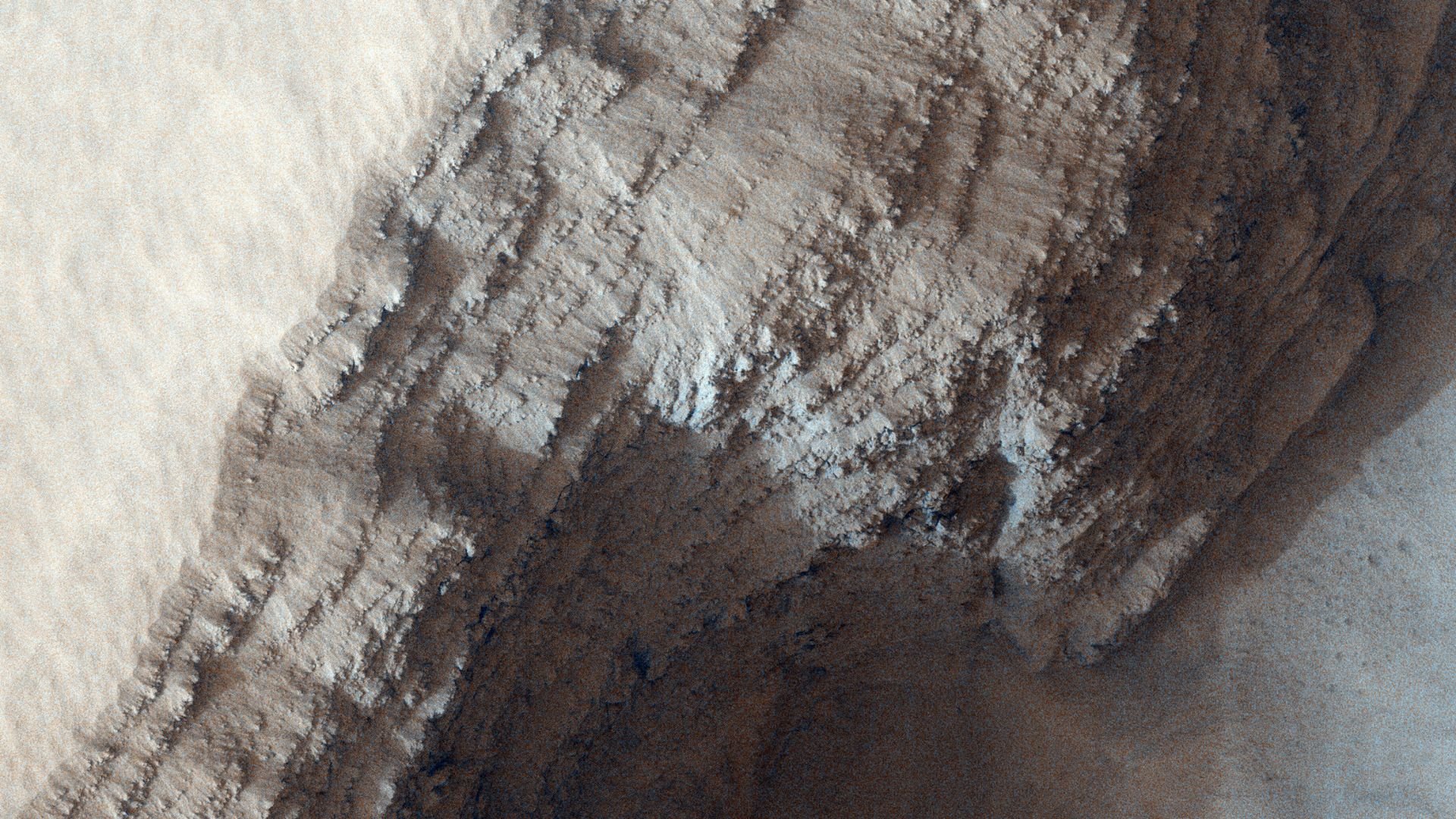
In their recent statement, ESA further elaborated on their thoughts on this aureole and how it may have been created.
“Intriguingly, this aureole has only built up on the northwestern flank of the volcano, likely due to prevailing winds from the opposite direction controlling where ice settled over time,” the ESA said.
Mars Sand and Dust
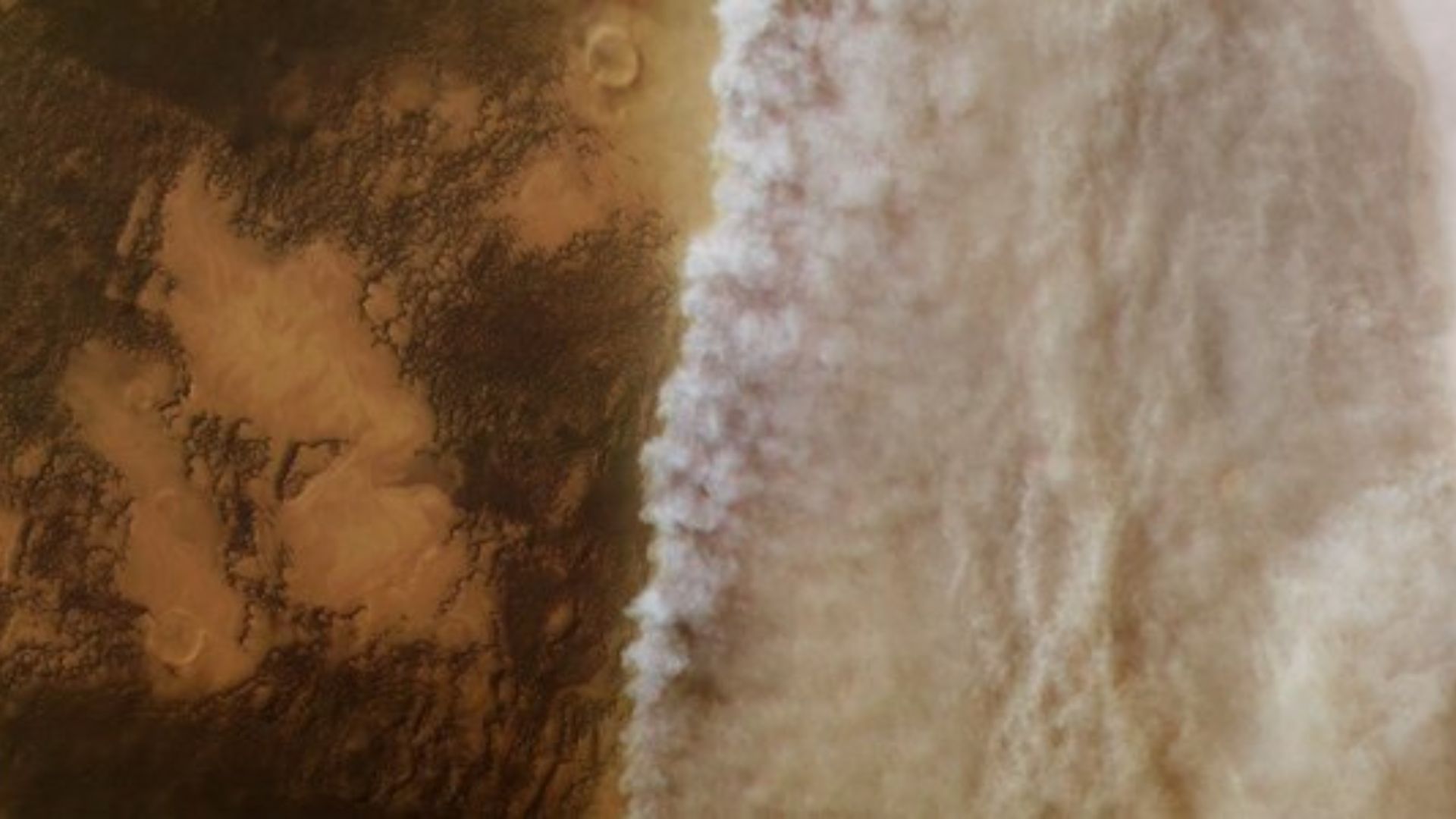
When many people think of Mars, they may think of the dust and sand that is often talked about on the planet. These recent images have also analyzed this frequent feature of the Red Planet.
The ESA has explained that windblown sand and dust in this region of Mars create different patterns on the surface that appear to be “zebra-like.” This is because the darker sand and dust seem to be deposited on lighter ground.
Past Volcanic Activity
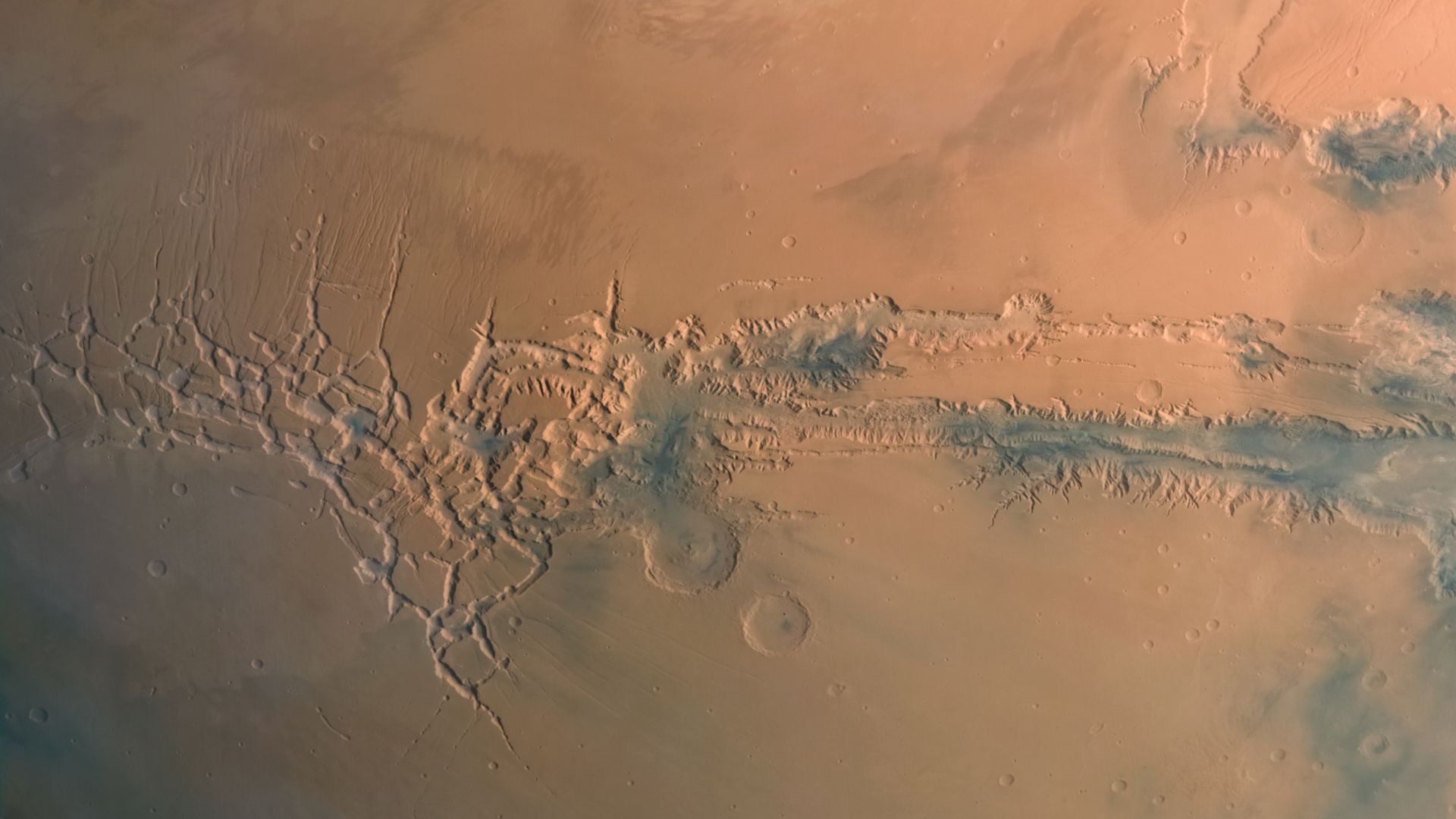
Furthermore, scientists also believe that these images show evidence of volcano activity in the past in this region.
The ESA said, “The surface here also shows evidence of lava flows, dating from when the volcano was active.”
Continuing to Analyze Mars
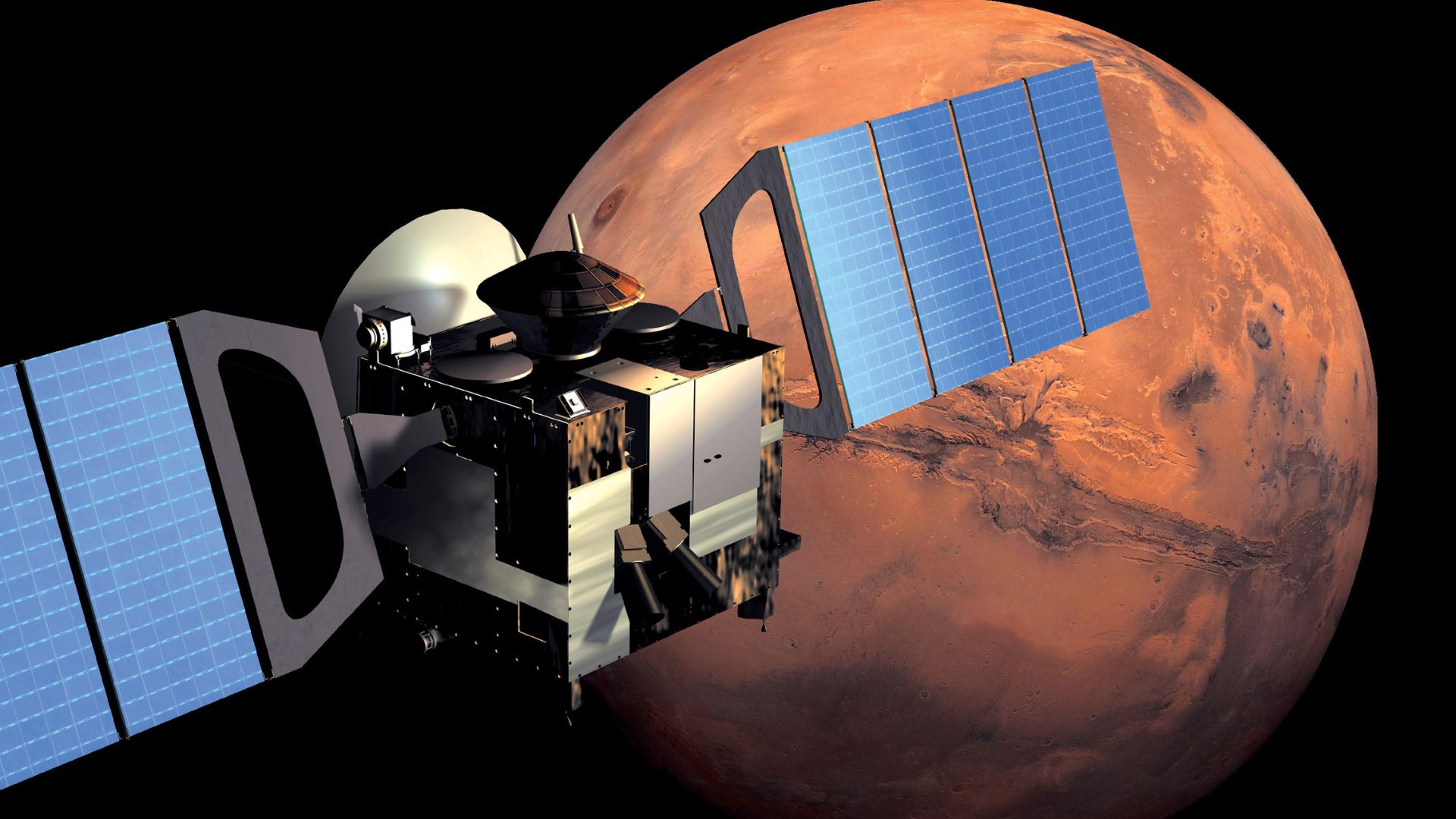
These stunning new photos of the huge scar that stretches across the surface of Mars have ignited scientists’ interest.
It has also further proved that the ESA’s Mars orbiter continues to bring back vital information about the mysterious Mars.
